
Considering safety is important when you are traveling whenever possible. We’ve compiled a list of the most dangerous cities.
These data come from World Population Review for 2024 which ranks danger by the number of homicides per 100,000 people. The numbers for this data are collected on an annual basis and are current as of the publishing of this article. The rankings of these cities change on a regular basis. This list excludes any cities that are inside an active warzone or conflict like the genocide happening in The Gaza Strip (where there is an average of 150.8 deaths per day), parts of Ukraine, the Congo, and Sudan, just to name a few. Of course, always do your research before traveling to any city, and plan accordingly for your safety.
Why Are We Talking About This?
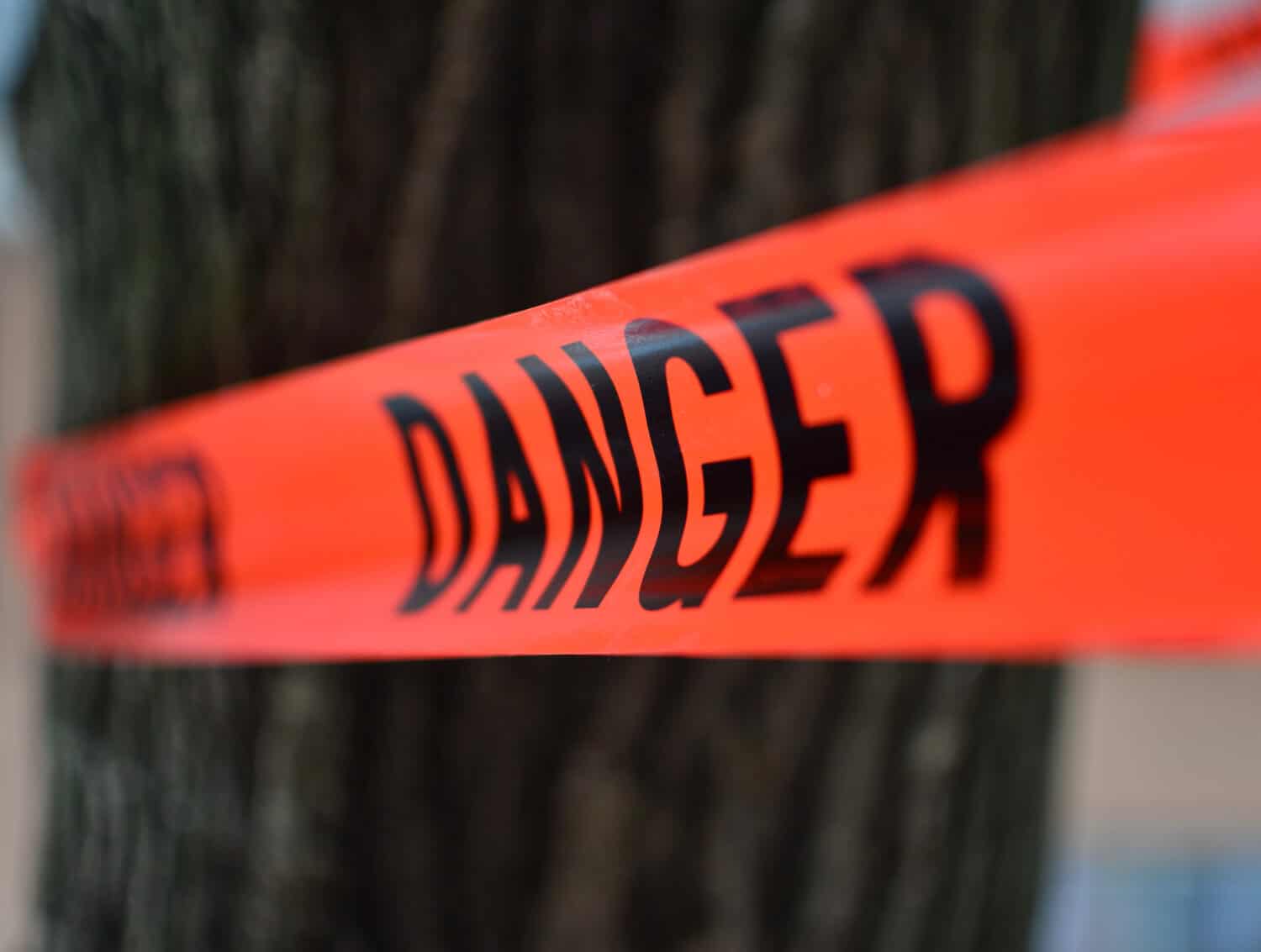
You can’t always just travel wherever you want. A little bit of research into your vacation destination can actually save your life. Too often, tourists expect the citizens of the places they visit to treat them in a special way, but life in many of our favorite cities is difficult and violent. We want all tourists to not only be safe when they travel but also show a healthy amount of respect for the places they visit.
#15 St. Louis, United States

- Danger: 60.59 deaths per 100,000 people
Our homicide list wouldn’t be complete without talking about the United States. Many areas in the United States are dangerous to travel to and live in. St. Louis scores number 15 on the homicide list with 60 homicides per 100,000 people.
St. Louis, with a population of 300,000 people, has gained and maintained a reputation for being one of the most dangerous cities in the United States because of its high crime and homicide rates. One of the key drivers of these crimes is St. Louis’ long history of racial segregation and economic inequality. There are neighborhoods with concentrated poverty where resources are scant, which feeds a cycle of crime and violence to maintain survival. The continuous loss of industry over the past few decades due to corporations outsourcing jobs to foreign countries has created high unemployment rates. Another factor is the easy accessibility to illegal and unregistered firearms.
Several countries, including Australia, have warned their citizens to “exercise normal safety precautions,” and to be aware of the extremely high medical costs, and gun violence. Canada has also cautioned its citizens to avoid traveling into the United States by car at night and warns against gang- and organized crime in large urban areas, as well as frequent mass shootings. Mexico has also warned its citizens of the historical racial and ethnic tensions that could increase violence toward Mexican citizens. Most countries also note the high violence risk for LGBTQ+ travelers, especially in the state of Florida.
#14 Feira De Santana, Brazil
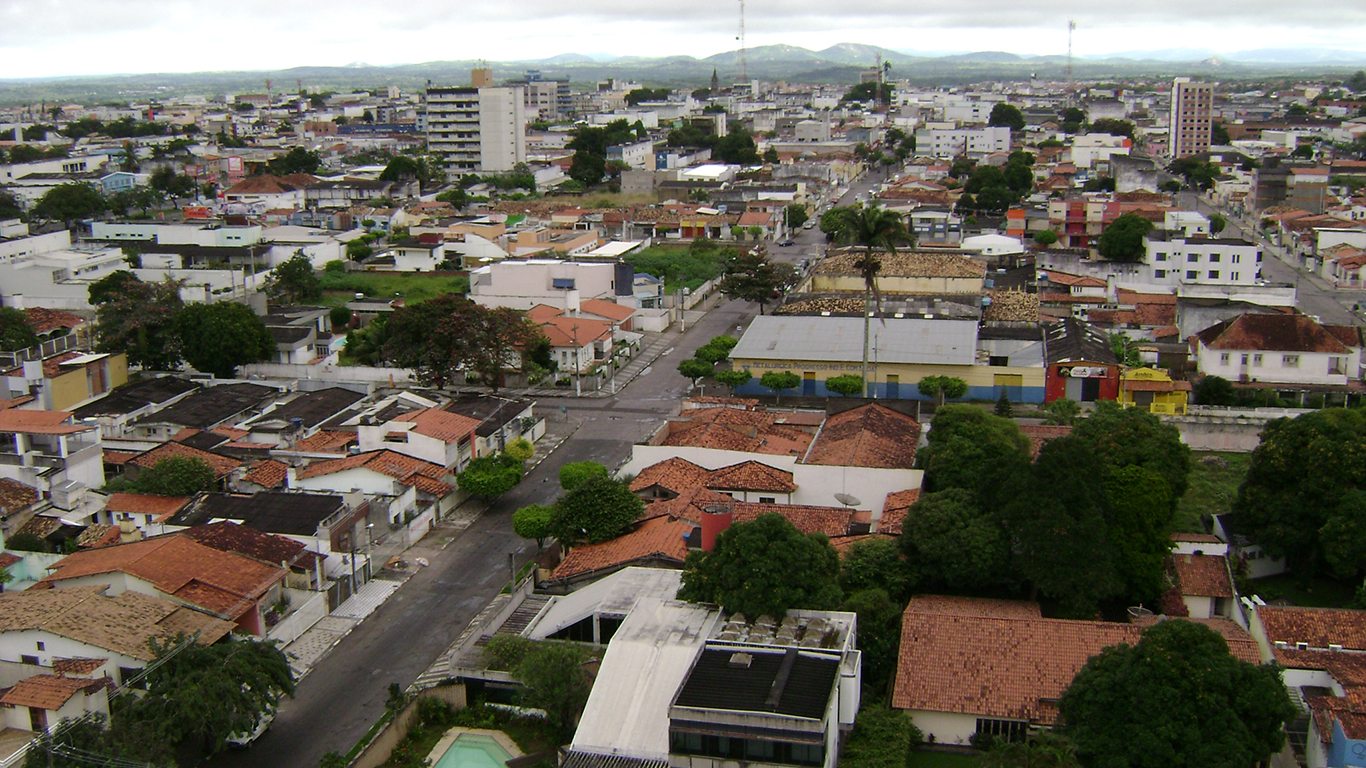
- Danger: 63.29 deaths per 100,000 people
Political crisis, economic instability, catastrophic flooding, and extreme poverty are some of the reasons why pockets of Brazil are unsafe. With climate change increasing the instances of catastrophic weather events worldwide, flooding, mudslides, and torrential rainfall is another problem that Brazil is recently having to deal with. With increased climate catastrophes, there has come an increase in insect-borne diseases such as Dengue and Oropouche disease. Currently, the United States has categorized Brazil as a Level 1 travel health notice because of dengue and oropouche fever, and on a Level 3, “reconsider travel,” safety advisory.
#13 Cancun, Mexico
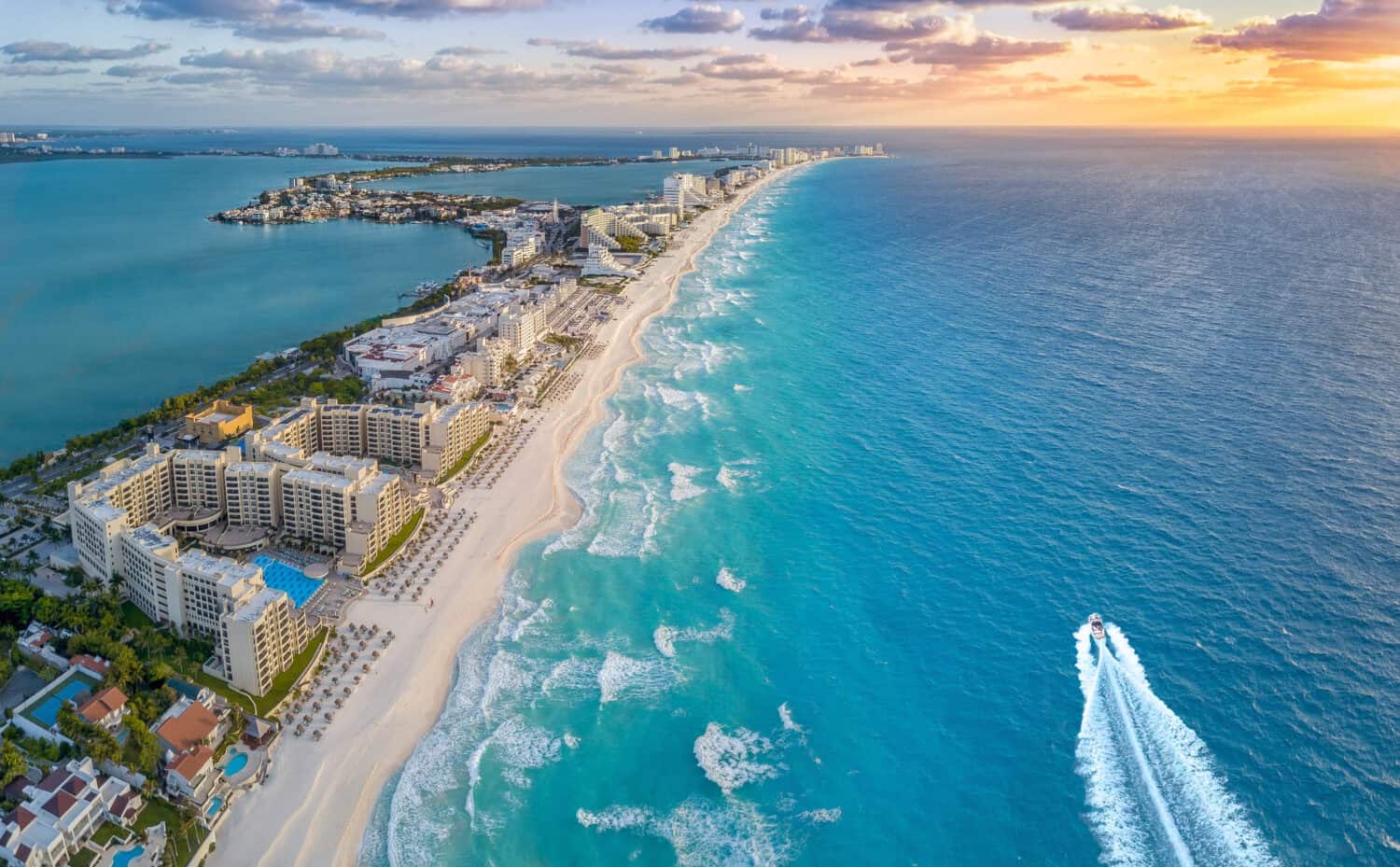
- Danger: 64.47 deaths per 100,000 people
Mexico is home to diverse cultures, exports, ruins, and delicious cuisine. But some fear it as being overly violent and considered dangerous to travel to. Most of the violence is gang and drug cartel-related, but the Mexican government also engages in its fair share of human rights violations. The violence mostly stems from when drug cartels became organized in the 1980s. After the Mexican Government declared war on criminal organizations in 2006, much of the violence ramped up when “El Chapo,” Joaquin Guzman, who was the notorious leader of the Sinaloa Cartel was arrested 2 times in Mexico, and then extradited to the United States in 2017.
#12 Belém, Brazil

- Danger: 65.31 deaths per 100,000 people
Belém was the first European colony in the Amazon, founded by Portugal in 1616. It is the largest city and capital of the Brazilian state of Pará and the gateway city to the Amazon River system. It continues to be the main commercial hub of northern Brazil.
#11 Cape Town, South Africa

- Danger: 66.36 deaths per 100,000 people
Cape Town and the rest of South Africa are currently under a level 2 travel advisory from the United States, “exercise extreme caution.” Not unlike the rest of the country, Cape Town’s crime is driven by poverty, inequality, and unemployment. Just like any large city, some neighborhoods are safer than others. Some of the safest and most tourist-heavy neighborhoods to visit in Cape Town are V&A Waterfront, Clifton and Camps Bay, City Bowl, and False Bay. Millions of visitors enjoy safe vacations to Cape Town every year.
The population of South Africa is 2.5 million people. South Africa is afflicted with direct, structural, and cultural violence. Still experiencing the effects of an apartheid regime in 1948, South Africa is still working to heal. Because South Africa, “has easy access to weapons, a general climate of lawlessness, high levels of violent protest, and corruption within the criminal justice system,” a large percentage of direct violent crime has flourished over the years.
South Africa experienced an increase in household crimes like housebreaking, home robbery, and theft of motor vehicles compared to 2021. About 1.1 million housebreaking incidents were reported in 2023, which represents 5.7% of all households in South Africa.
South Africa also suffers from a lot of structural violence which has a direct effect on the level of education, employment, and healthcare that certain populations do and do not have. These structural inequalities have given rise to economic inequality. Poverty and lack of resources fuel violent crimes.
#10 Cuidad Bolivar, Venezuela
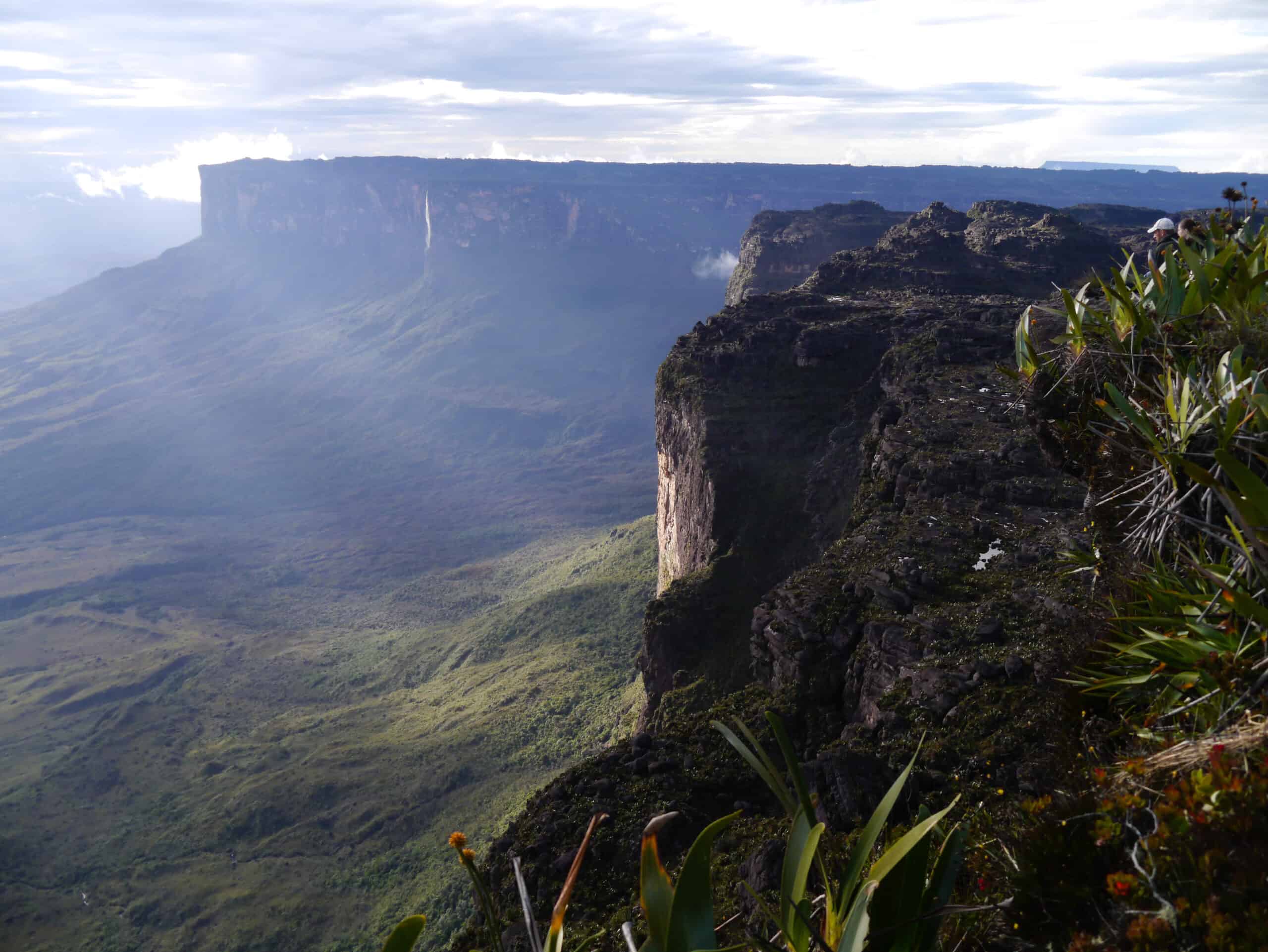
- Danger: 60.09 deaths per 100,000 people
In 1999, the Populist Regime gained control of Venezuela, and since then, tens of thousands of Venezuelans have sought asylum each year in the United States. Rampant poverty, inflation of nearly 13,000%, crime, food and medicine shortages, political instability, arbitrary law enforcement, kidnapping, and gang violence make life very difficult for Venezuela’s population of almost 30 million people. The United States currently has Venezuela listed under a level 4 travel advisory, or “do not travel,” for the entire country.
#9 Fortaleza, Brazil
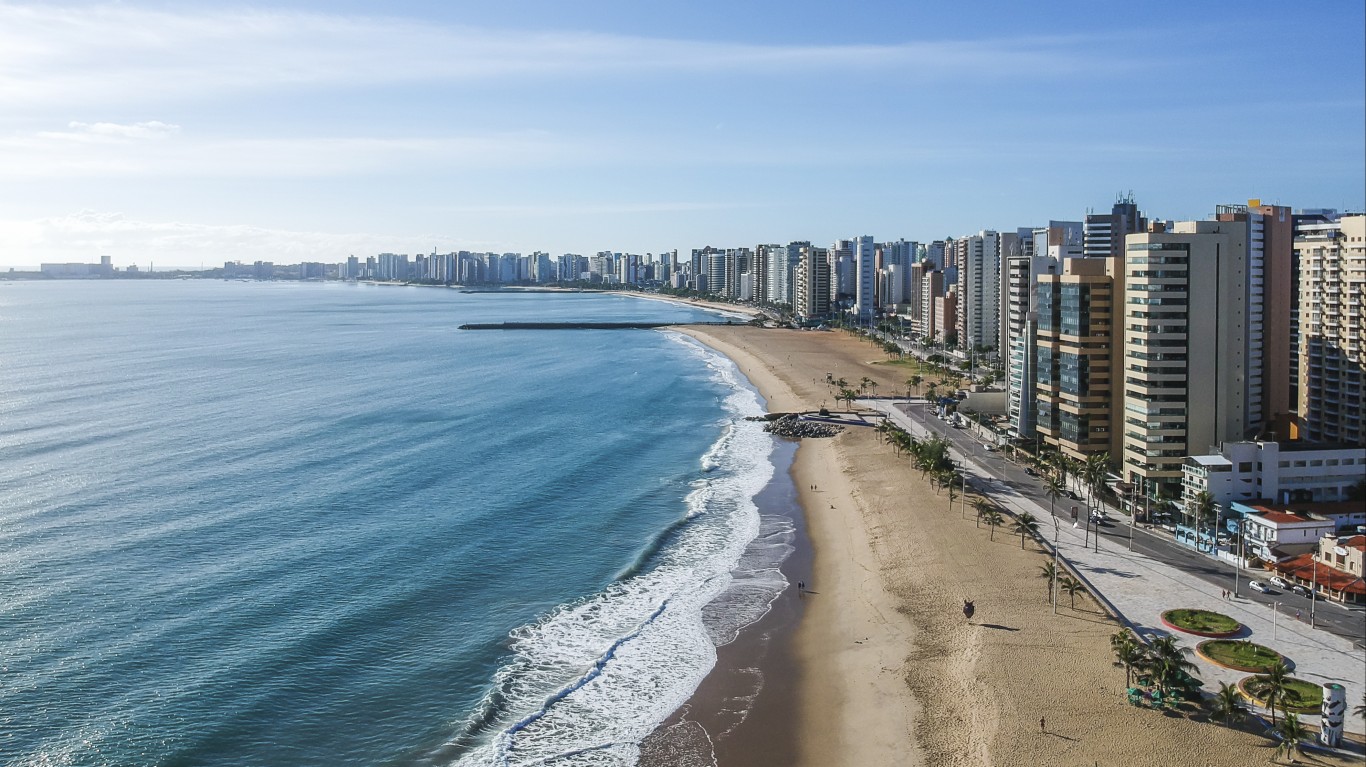
- Danger: 69.15 deaths per 100,000 people
Fortaleza has a population of 2.43 million people and has a thriving metro area. Yellow Fever isn’t the only thing you need to worry about if you travel to Fortaleza. Fortaleza isn’t recommended for solo women travelers, and rates of robbery are high, although crimes used to be less concentrated in touristy areas and centered around the suburbs.
#8 Natal, Brazil
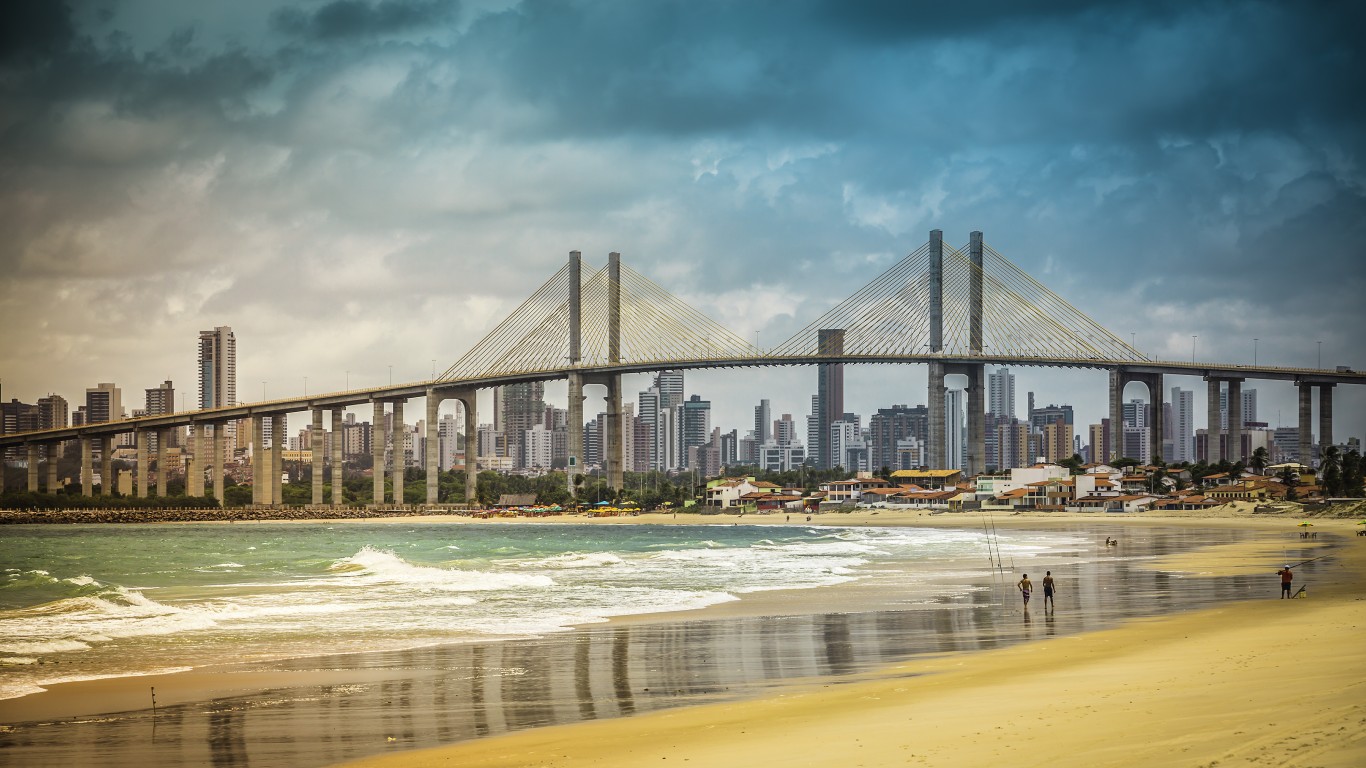
- Danger: 74.67 deaths per 100,000 people
Natal is one of the top tourist destinations in Brazil, being known for its slow pace and pristine beaches. The overall crime rate of Natal has been on a steady decline over the past decade, which is good news for this tourism-dependent beach town. Natal doesn’t rank on our dangerous cities list, although it appears on our high homicide list. It is a great place for tourists to experience Carnaval in a beautiful Afro-Brazilian city. There are high crime rates in certain parts of the city, but again, the tourism-heavy areas aren’t as affected. There are plenty of neighborhoods that have vibrant nightlife, beaches, markets, and restaurants.
#7 Cuidad Guayana, Venezuela

- Danger: 78.3 deaths per 1000,000 people
The actual city of Cuidad Guayana was actually recently founded in 1961, but previous settlements in the area have a history in the 18th century. It is one of Venezuela’s most important shipping and commercial centers. The city, like many others in Venezuela, suffers from economic turmoil due to the mismanagement of the country’s economy and rampant political corruption. Both contribute heavily to crime and violence throughout the entire country.
#6 La Paz, Mexico

- Danger: 85.56 deaths per 100,000 people
After El Chapo’s removal from the cartel game, rival gangs began to try expanding their territories and controlling more of the drug market. The Mexican government responded by using military force to combat this violence, which only led to more violence. Contrary to what he said while running for the Mexican Presidency, Andres Manual Lopez Obrador, aka “AMLO,” promised to switch back to a civilian-led police force with his “hugs, not bullets,” policy. He also promised programs that would reduce poverty and decrease the need for the illegal drug market. Since he was elected in 2018, it seems AMLO has done almost the exact opposite.
#5 Cuidad Juarez, Mexico
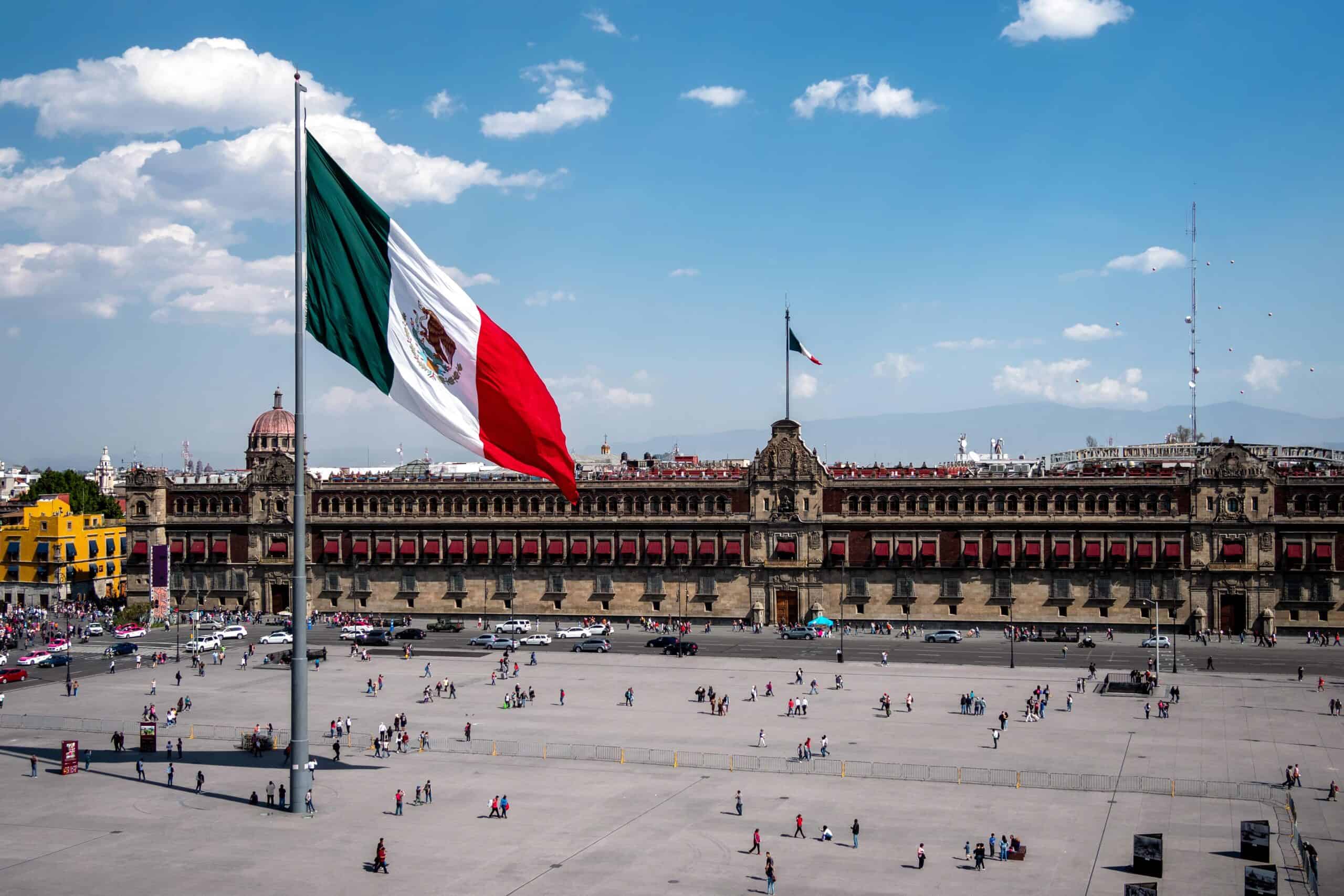
- Danger: 100.8 deaths per 100,000 people
AMLO created a hybrid National Guard which consists of civilian police as well as military force, and has worked closely with the United States to try and use excessive force to curb cartel and gang activity. The United States has been invested in trying to intervene to reduce smuggling rates, as most of the illicit drugs, including fentanyl, are being smuggled into the country from Mexico. In 2022, a reform was passed that allows the military to carry out domestic law enforcement until the year 2028, suggesting that this isn’t just a temporary measure that AMLO first claimed.
Mexican citizens who have family members who are victims of military and drug-related crimes have felt frustrated over the lack of justice that has been reached for their deceased loved ones. The uncoordinated Mexican judicial or prison system simply isn’t capable of controlling the ever-growing complex criminal networks throughout the country.
#4 Cuidad Victoria, Mexico

- Danger: 86.1 deaths per 100,000 people
Despite the high crime rates, Mexico has many tourism-centered cities and areas that are extremely safe for visitors and citizens, as these areas rely on tourism to fuel their economy. The United States has advised to not travel to only 6 of Mexico’s 31 states, including Colima State, Guerrero State, Michoacan State, Sinaloa State, Tamaulipas State, and Zacatecas due to crime and kidnapping risk. Popular places like Tulum, Playa Del Carmen, and Cancun which are located in the Yucatan State which is categorized under “exercise normal precautions,” among several other states. Popular tourist destinations are sometimes over a thousand miles away or more from some of the most dangerous states. Mexico is a large country, and like any other country, some places are safer than others.
#3 Caracas, Venezuela
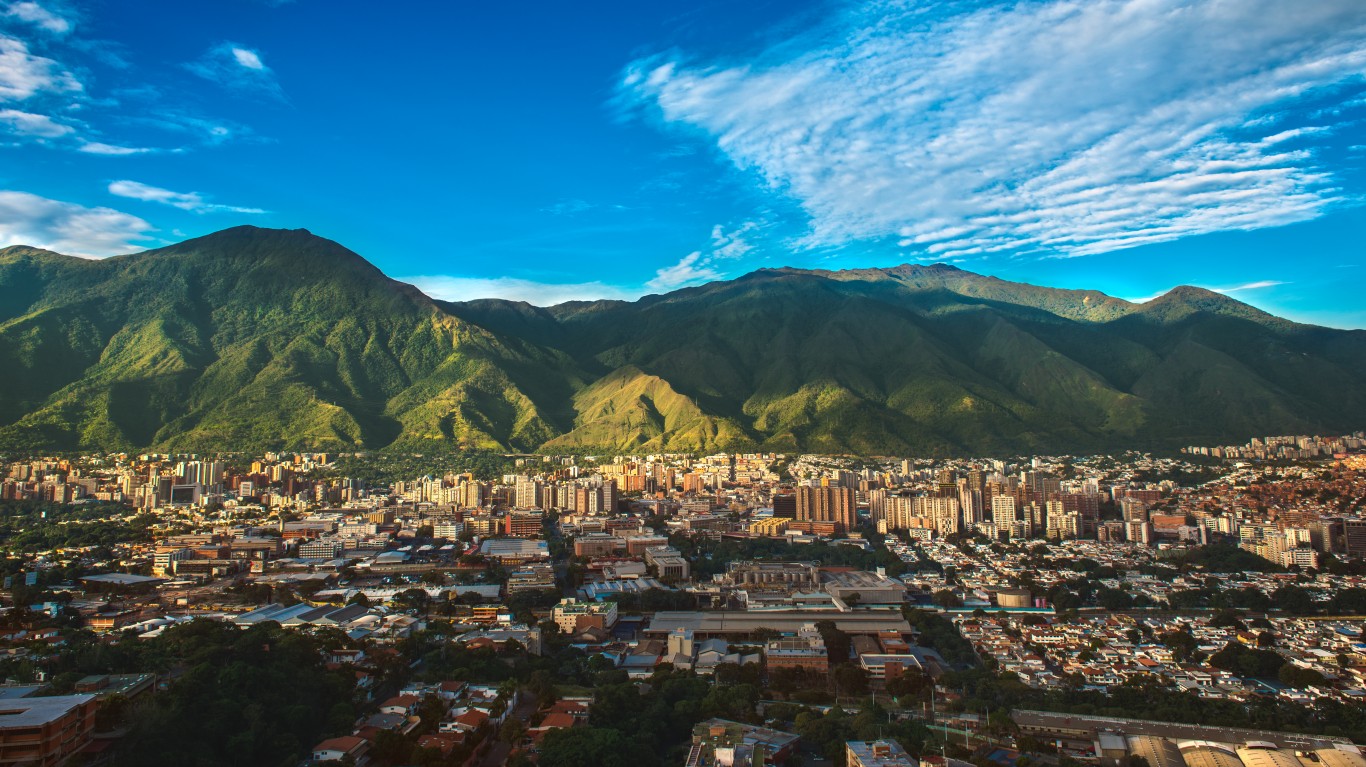
- Danger: 99.98 deaths per 100,000 people
Caracas is Venezuela’s largest agglomeration. The population of Caracas is 2.99 million people. Caracas is also the most populated city in South America. In 2023, tourism rose to Venezuela by 90% of the previous year with around 1.25 million foreign tourists visiting. The country is working with Poland, Russia, and Colombia to schedule charters and operations and working to change the country’s image. While Caracas has a homicide rate of 111.2 deaths per 100,000, Venezuela as a whole only experiences 26.8 homicides per 100,000 people.
#2 Acapulco de Juarez, Mexico
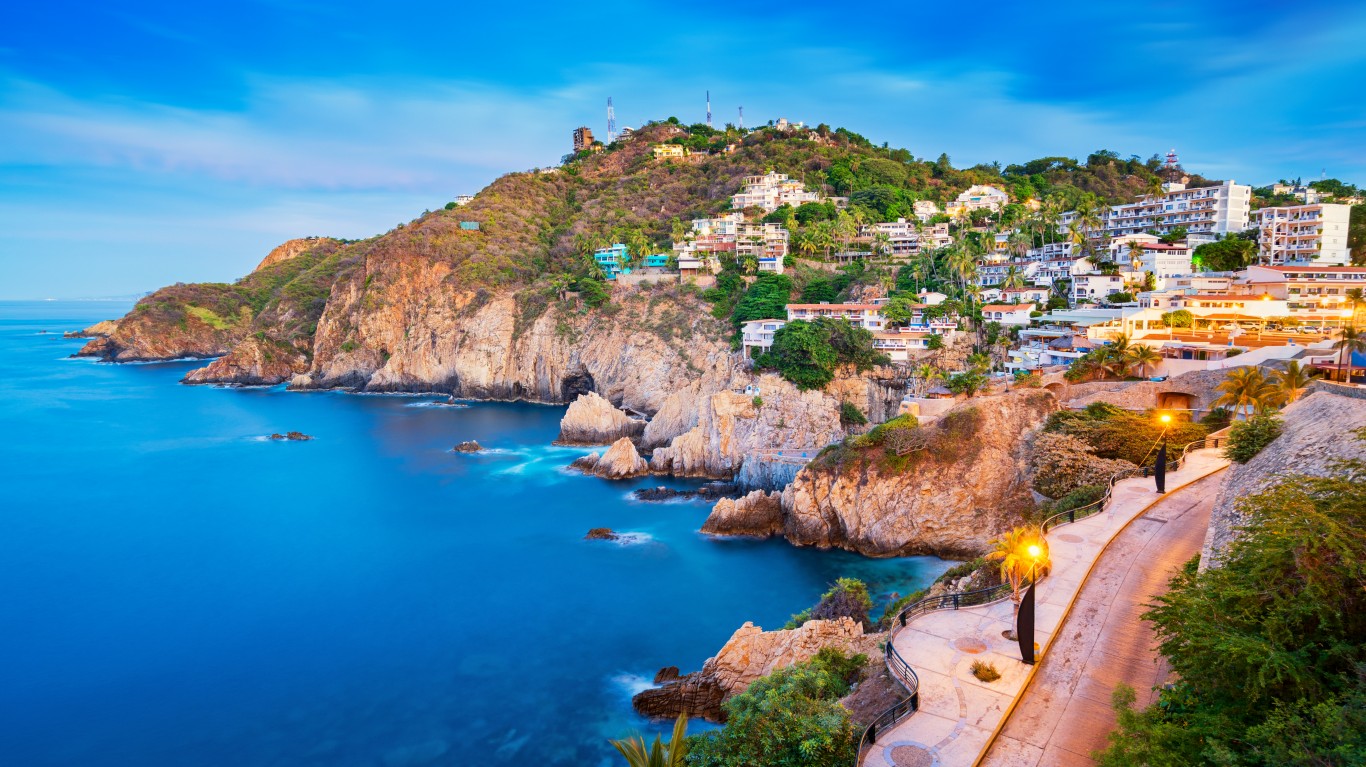
- Danger: 110 deaths per 100,000 people
Acapulco is one of Mexico’s oldest beach resorts, but tourism dropped sharply as violence rose, and Acapulco is now the ninth-deadliest city in Mexico and is usually in the top ten most dangerous cities in the world. The United States warns its citizens to avoid travel to the city if possible. In 2016 alone there were 918 murders, and in 2018 the entire police force was disarmed by the Mexican military because the government suspected that it had been infiltrated by the local drug gangs.
#1 Tijuana, Mexico
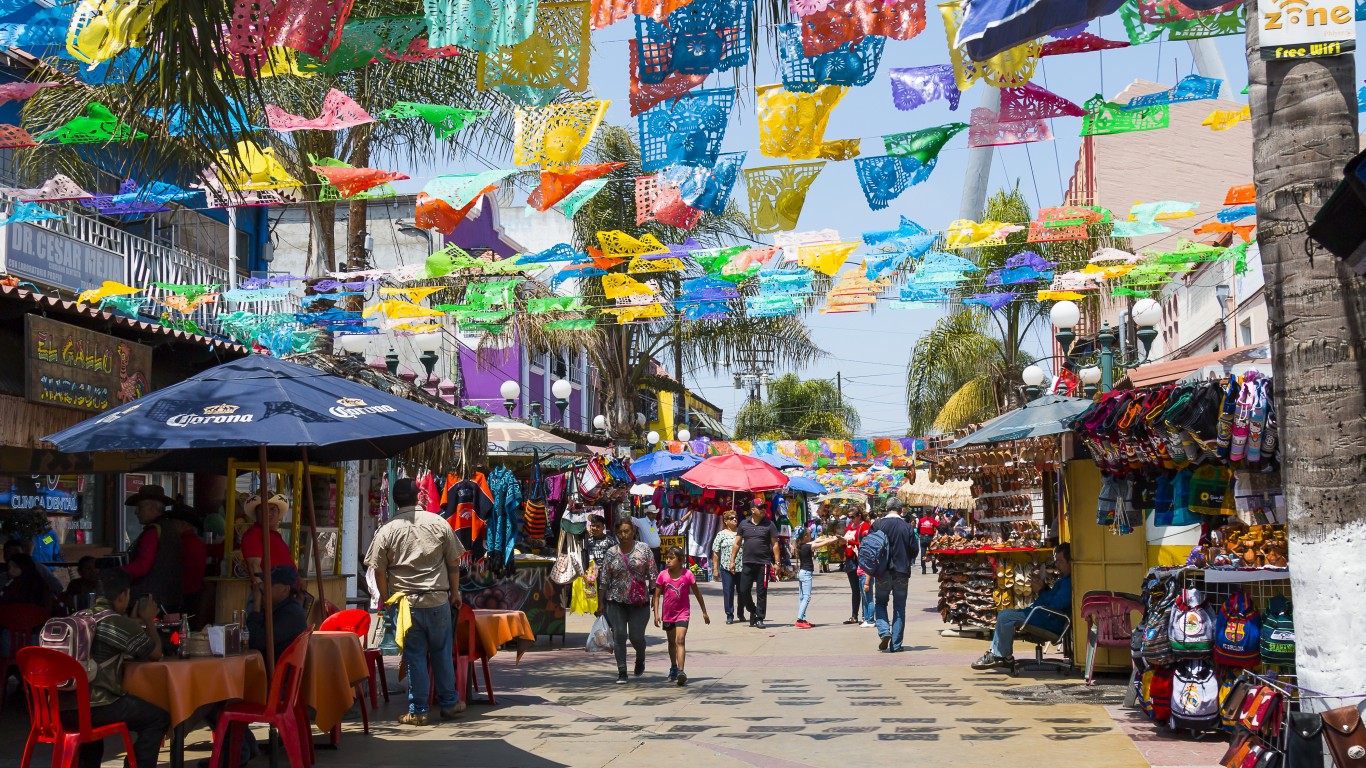
- Danger: 138 deaths per 100,000 people
Tijuana is one of the major centers of the San-Diego-Tijuana metro area, and the second-most populous city in Mexico. While most famous in the United States for its vacationing and party scene, Tijuana is actually a dominant manufacturing hub of all of North America and is the capital of medical device manufacturing for North America.
Organized crime is the source of the violence and criminal activity in the city. It has a travel advisory from the U.S. State Department. The kidnapping and murder of tourists have added to the city’s reputation as a dangerous destination.
Thank you for reading! Have some feedback for us?
Contact the 24/7 Wall St. editorial team.



